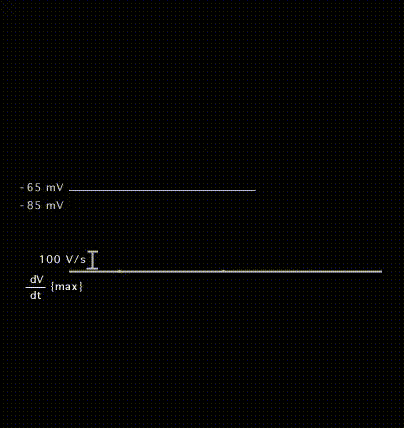
The voltage dependent factor is demonstrated here. The first or non-premature action potential arises from the normal resting potential of -85 mV and its upstroke velocity, (dV/dtmax), shown below the action potentials, is greater than 200 V/sec. The premature action potential occurs before the cell has fully repolarized, i.e. during the relatively refractory period, and arises from a membrane potential of -65 mV. Its amplitude and duration are decreased relative to the non-premature response. Its maximum rate of rise, is also less in the premature response than in the non-premature response and in this example, is less than 50 V/sec.
